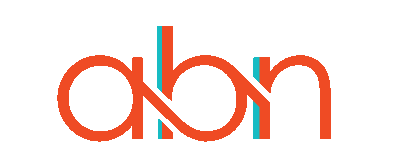Student Loan Debt Forgiveness Scams: Red Flags To Look Out For
At the present time, there exists a great deal of businesses that attempt to get those who are struggling with student loans to sign up with them for student debt relief. Since it may be difficult for some people to find the necessary forms, fill them out, and provide the required documentation, these businesses aim to help you through the process. However, it’s important to note that in most cases, form-filling and documentation are all they can really help you with.
While there are many legitimate businesses that assist students in obtaining help with loans, unethical businesses are increasingly common. Public records indicate that more than 100 debt relief agencies offer services of questionable value. The FTC and the CFPB have both shut some agencies down.
If you’re interested in debt relief for a student loan, it’s important that you know how to recognize scam businesses and stay away from them. In this article, we’ll highlight some of the red flags to look out for so that you can protect yourself from scammers.
Red Flag #1: They Ask For Upfront Payment
In the United States, it’s illegal for companies to charge advance fees for student loan debt relief services. The Federal Trade Commission (FTC) has put regulations in place to protect borrowers from deceptive practices by these companies. While it’s okay for businesses to charge for the service that they offer, they must first successfully settle your student loans.
When a company insists on immediate payment before they’ve even begun to help you with your student loans, it’s a clear indication that something is amiss. Scammers often employ this tactic to exploit borrowers who are already struggling with debt, making false promises and then disappearing with their money.
To safeguard yourself from falling victim to such fraudulent schemes, always remember this cardinal rule: never pay upfront fees to a student loan debt relief company. Instead, seek assistance from trusted sources, like government programs or reputable nonprofit organizations, that offer legitimate help without requiring any payment upfront.
Red Flag #2: They Promise You Immediate Results
Some agencies promise to get you on something that they call the Obama student loan forgiveness program. While loan forgiveness programs were started under President Obama, there is no specific program that goes by that name.
Legitimate student loan assistance programs typically involve specific requirements and processes that take time to navigate. Companies claiming to offer overnight debt elimination or instant loan forgiveness often use such promises to lure in vulnerable borrowers. To protect yourself from potential scams, be cautious of any organization that seems too good to be true and remember that genuine assistance usually follows established procedures and timelines.
Red Flag #3: They Use Aggressive Sales Tactics
Be wary of student loan debt relief companies that employ aggressive sales tactics. Legitimate organizations focused on assisting borrowers with their student loans do not need to resort to high-pressure or pushy sales techniques. If you encounter a company that constantly pressures you to make quick decisions, sign contracts without adequate review, or insists on immediate payment, it’s a warning sign. Such aggressive tactics can be indicators of fraudulent operations attempting to exploit your financial vulnerability.
Legitimate assistance providers will offer information, answer your questions, and allow you the time you need to make informed decisions about managing your student loans. Always trust your instincts and proceed with caution when faced with aggressive sales tactics from these companies.
Red Flag #4: They Ask You For Personal Information
While legitimate student loan companies will require you to provide personal information like your social security number, it can be a red flag in some instances.
Here are some tips to keep in mind before providing sensitive information:
- Verify Legitimacy: Research the company thoroughly, check for reviews and ratings, and confirm their credentials. Ensure they have a legitimate website and contact information.
- Ask Questions: Don’t hesitate to ask the company why they need your Social Security number and how they will use it to assist you. Be cautious if a company is overly insistent or doesn’t provide clear and transparent information about how they will use your information.
- Protect Personal Information: If you are uncomfortable or suspicious about a company’s request for your Social Security number, consider seeking assistance from your loan servicer directly or government programs that do not require third-party involvement.
Takeaway
In general, it isn’t a good idea to go with a debt relief company that seems to offer anything more than a government program would, or in a shorter timeframe. All that an agency can really do for you is to apply for the government’s loan forgiveness programs on your behalf.
If you wish to avoid scams all together, you can go directly to the government’s student loan website.






